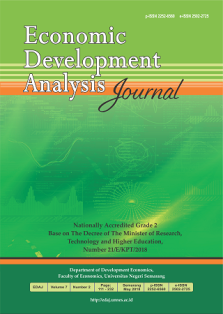Number of Elderly in The Household and Elderly Household Welfare
Abstract
Fertility and mortality decline in Indonesia has caused the number of households with elderly members (aged 60 years and above) to grow. However, the level of their welfare is relatively lower. It leads to socio-economic problems such as elderly neglect, decreased quality of human resources, and increased government spending to improve the elderly generation's welfare. Policies to anticipate and deal with these problems need to be taken based on population analysis. This study investigates the association between the number of older people in a household and their household's welfare. Using 86,927 elderly households data from Susenas March 2019, with multiple regression analysis, this study found that the number of elderly is significantly associated with lower household welfare. The number of elderly in the elderly household has the most significant influence on the lower ratio of household welfare compared to the number of adults or children. This study also found that income, region, location, awareness of household members to utilize health services optimally, and the length of education and age of the household head is positively related to better elderly household welfare. Meanwhile, the male household head correlated significantly with a lower welfare ratio than the female household head.


